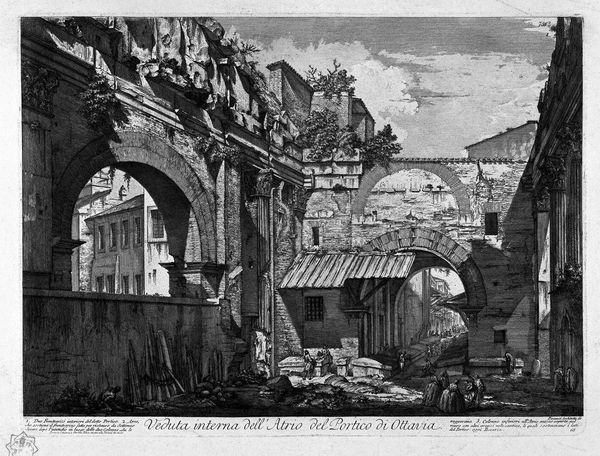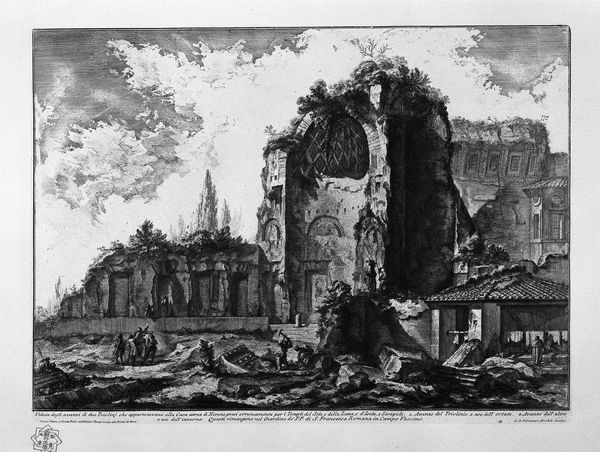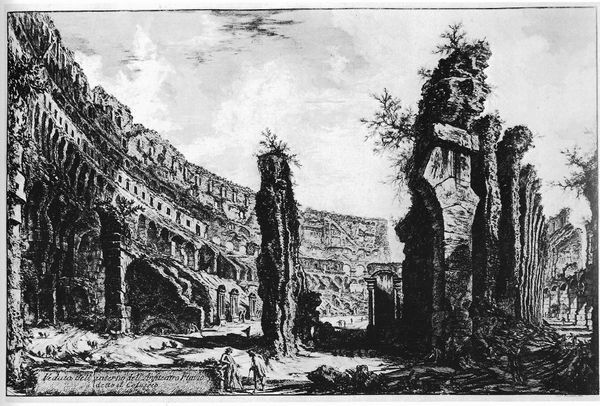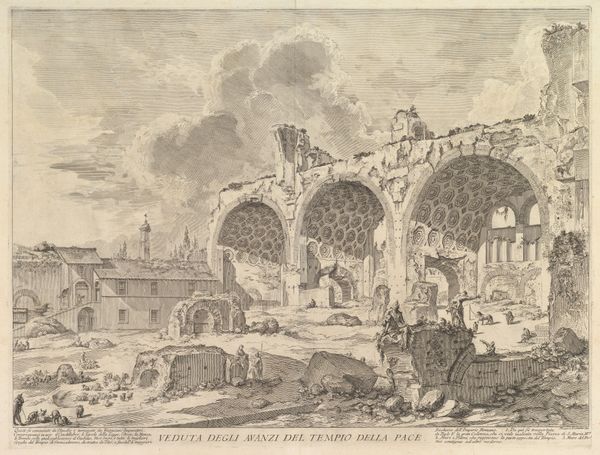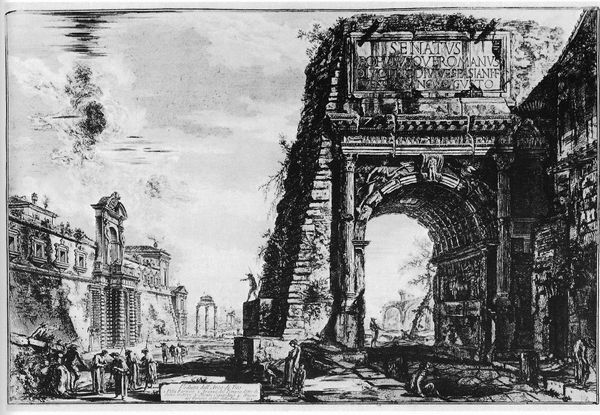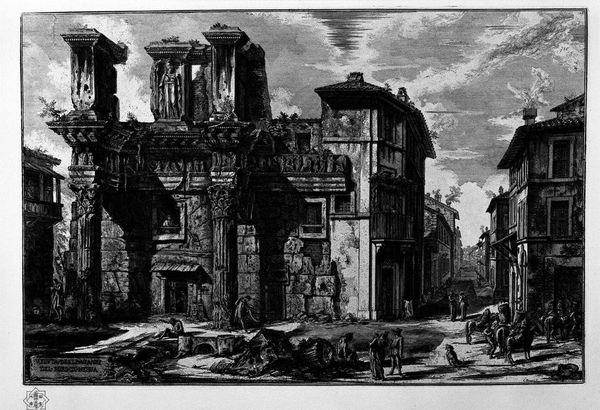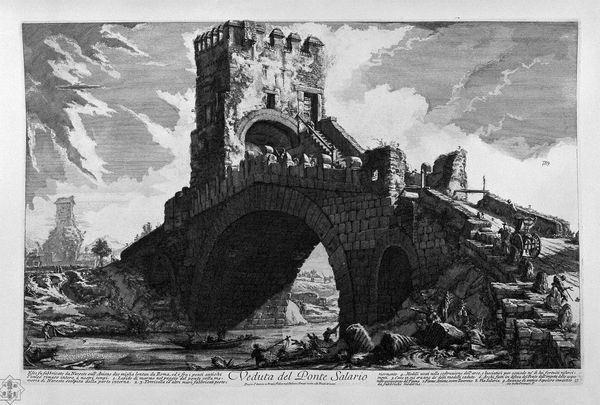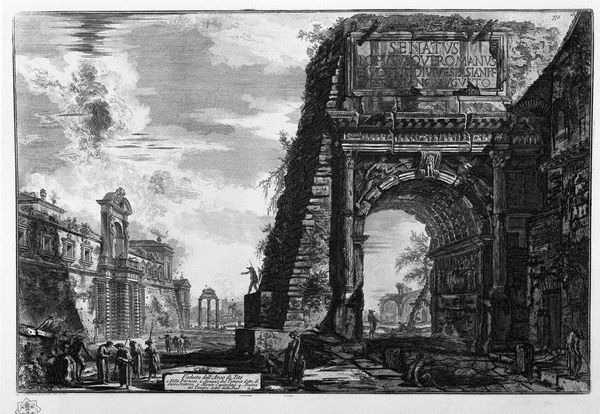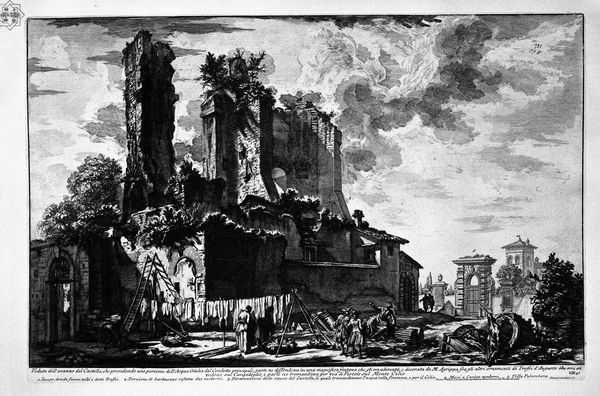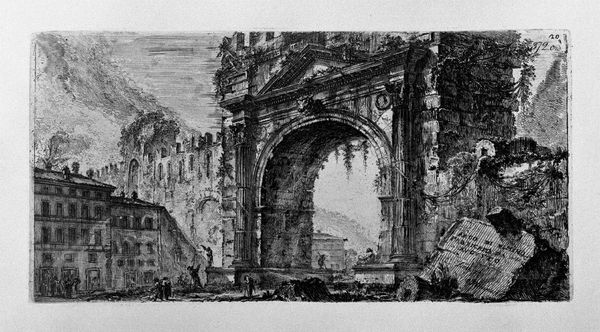
View the remains of Nero`s Golden House Tablino, vulgarly called the Temple of Peace
0:00
0:00
photography
#
pencil sketch
#
vehicle
#
charcoal drawing
#
charcoal art
#
photography
#
fluid art
#
pen-ink sketch
#
surrealism
#
traditional art medium
#
tattoo art
#
surrealist
#
pencil art
Copyright: Public domain
Giovanni Battista Piranesi created this etching of the ruins of Nero’s Golden House in Rome. Piranesi wasn't just documenting the ruins; he was also making a statement about the grandeur of the past in contrast to his present. Made in the 18th century, this print reflects a broader cultural interest in classical antiquity, but it also critiques the institutions of art and power. The “Temple of Peace” was anything but, built by an emperor known for his cruelty and excess. Piranesi highlights the vanity of rulers and the temporary nature of their monuments. The figures dwarfed by the ruins emphasize the insignificance of the present. To fully understand Piranesi’s work, we might look to historical accounts of Nero’s reign, architectural studies of Roman buildings, and the artist’s other prints of Roman ruins to get a deeper understanding of the social and institutional context in which it was made. By doing so, we recognize that art is not created in a vacuum, but rather is contingent on social and institutional forces.
Comments
No comments
Be the first to comment and join the conversation on the ultimate creative platform.
